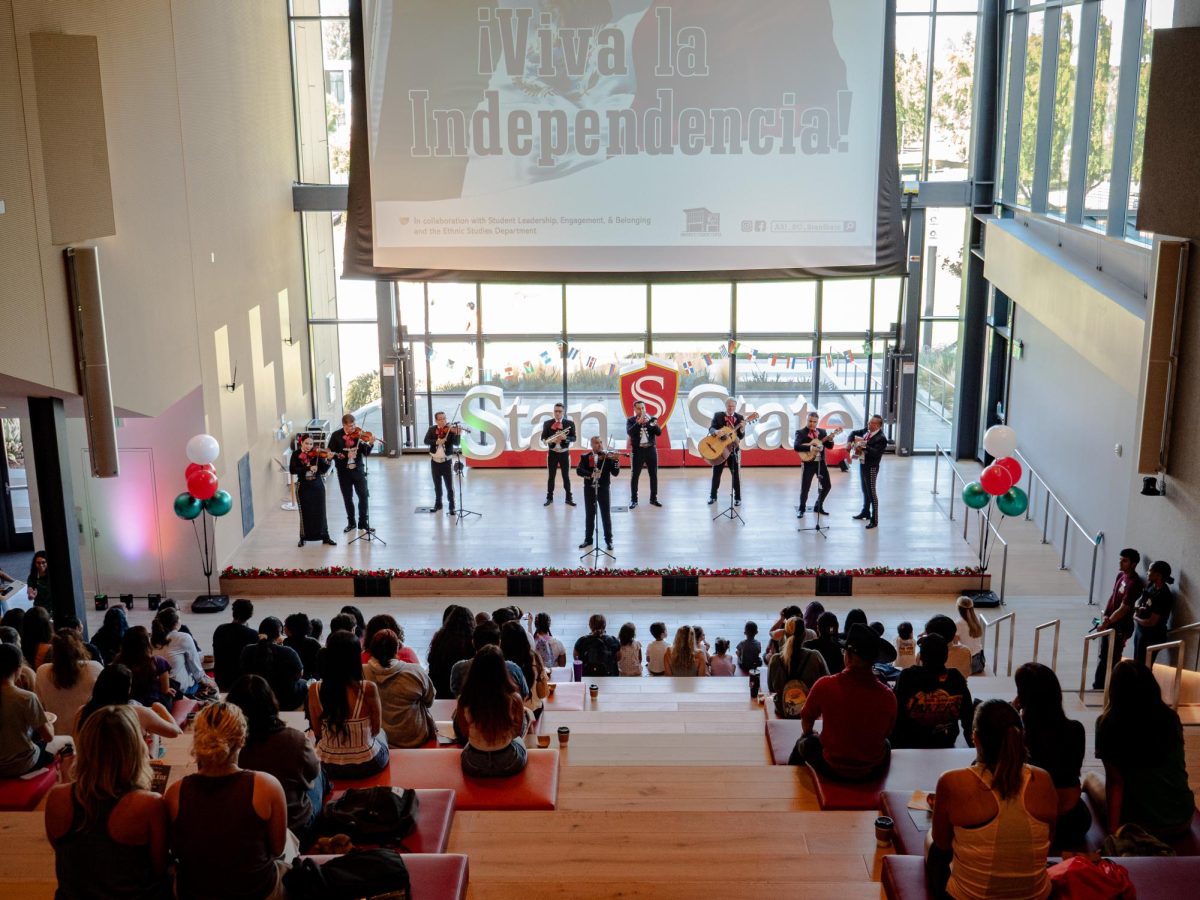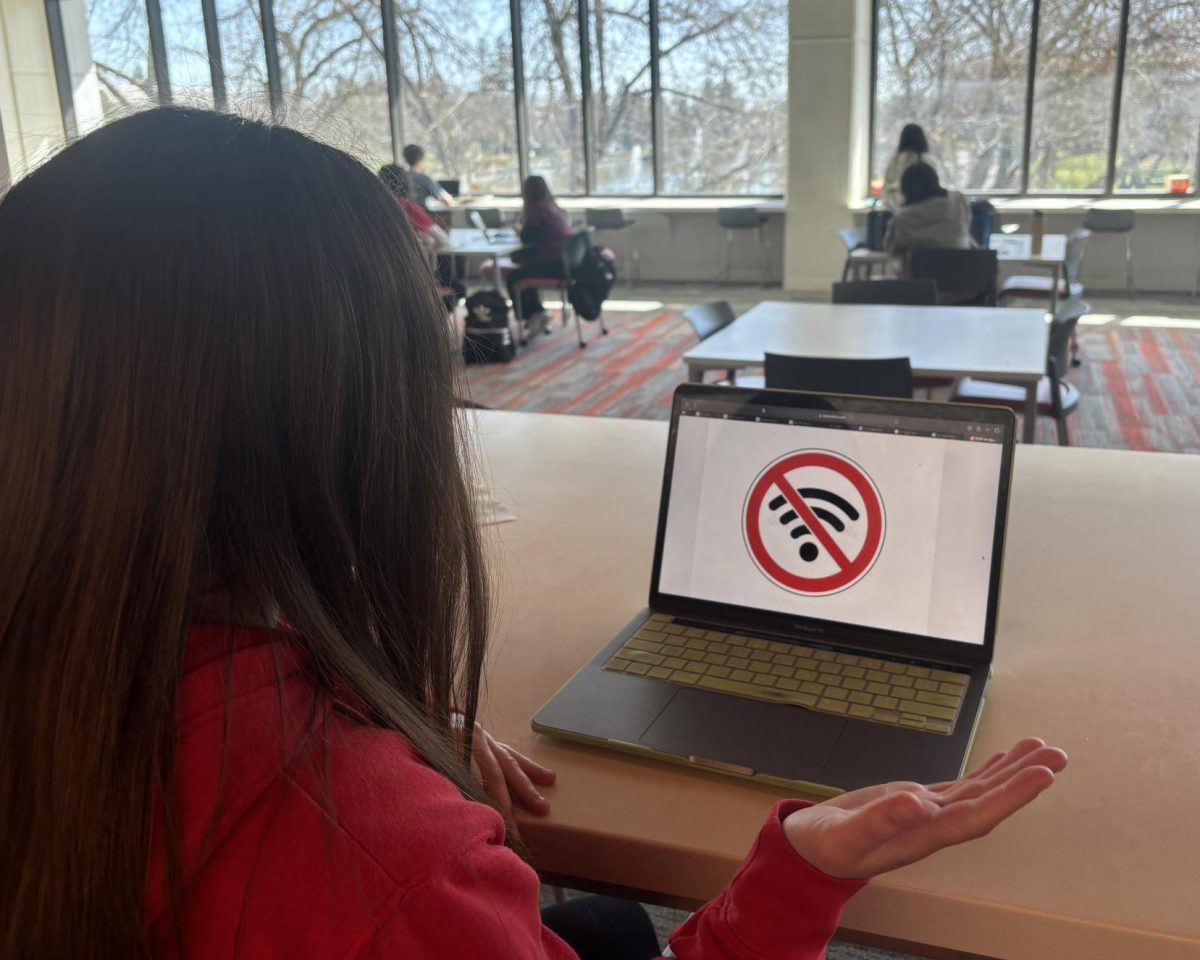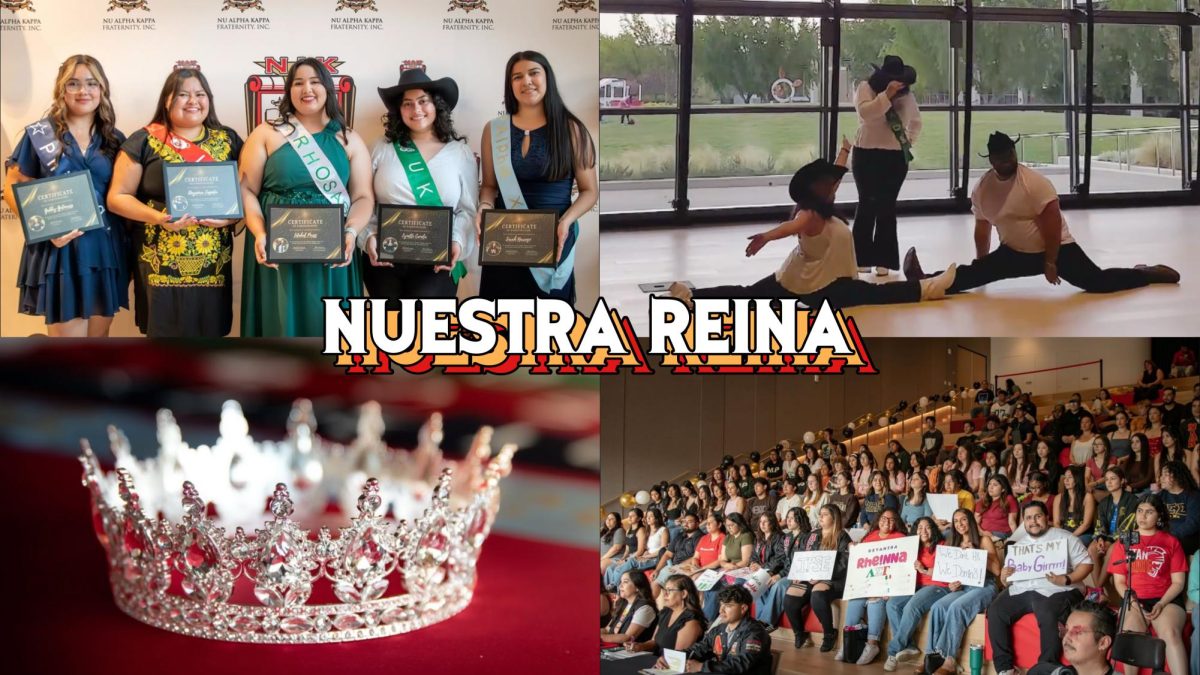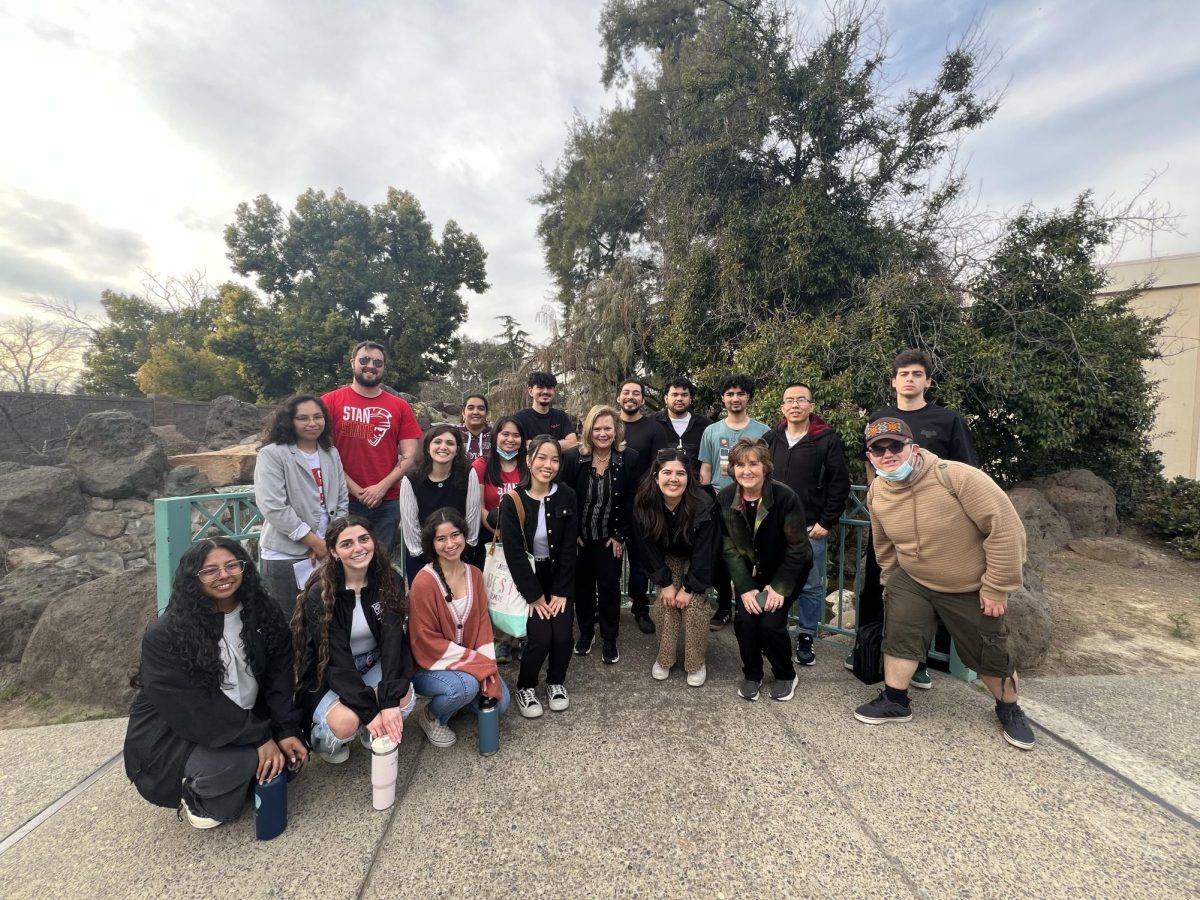Cats can be a person’s best friend, and that’s why it is not uncommon to see a cat or two wandering around California State University, Stanislaus (Stan State), throughout the day, or seeing a white small cat house with food and water by the Mary Stuart Rogers (MSR) building and throughout the campus in discrete areas.
Stan State has an organization on campus named AdvoCATs, which is formed by faculty staff, students and people of the community who have love and compassion for animals, especially for cats.
The organization advocates for the cat’s care, health, well-being, protection and understanding. They also want to bring awareness to cats by encouraging dialogue, education and involvement.
Before AdvoCATs was created, there used to be a student organization called the Campus Cat Coalition that was established in 2004. This organization was formed to managed the feral cat population which was over 50 cats campus wide.
The Campus Cat Coalition was the one that proposed the trap-neuter-return (TNR) program to campus administrators, which helped catch the feral cat population on campus so they could be given a health exam, vaccinated, spayed/neutered by veterinarians and later be released on campus. Later the organization disintegrated.
Eventually, the Campus Cat Management and Care Management was established in January 2016, with the recommendation and support of a former administrator here at Stan State who is an animal lover and felt they needed to create a group that would help the campus cats.
The committee managed the campus cat population and they also shared information and any updates on any activity that involved the cats.
The AdvoCATs was later created when some of the members of the committee Campus Cat Management and Care Management decided to branch out. After branching out they decided to establish a separate group, which actually provides the loving care, financial support and advocacy for the campus’ cat family.
The Campus Cat Care and Management, which is a combination of Stan State AdvoCATs and people from administration and volunteers, get together with Risk Management and Safety and have monthly meetings where they talk about the cats on campus.
Amy Thomas, Director of Risk Management at Stan State explained what is usually brought up in these meetings.
“On a monthly basis, we discuss the health status of cats, the feeding program and any public [information] we’d like to share about the well-being of cats,” Thomas explained.
While Stan State supports the management to of the cats on campus, it does not claim ownership of the cats or provides direct care for them. They allow them to live on campus as a matter of population control. The responsibility of their care falls solely on the volunteers who help take care of the cats on campus.
Mami Trussel, Administrative Support Coordinator for Strategy Planning and Enrollment Management Innovation in the Enrollment Services at Stan State, is also the coordinator of AdvoCATs. She is also part of the feeding group, along with other volunteers.
Trussell is an animal lover and explained what motivated her to become the coordinator of the AdvoCATs team.
“It is heartfelt and ethically, the right thing to do. Animals gravitate to our campus for food, shelter and affection because of abandonment, neglect, abuse or other circumstances through no fault of their own. They are innocent animals at the mercy of humans,” Trussell explained regarding her main motivation to be part of AdvoCATs.
“We don’t want this to become a dumping ground for people because your conscious feels much better when you are dropping off your cat here on a campus where we are going to love them and care for,” Trussell said, clarifying why the organization refused to obtain visibility in prior semesters.
Another reason that Trussell said they did not want much coverage before is because it is important to inform people they did not want Stan State to be seen as an avenue for irresponsible behavior toward an animal.
According to Trussel, there are 20 cats at the most that live on campus. Some of the cats’ names that live on campus are: Tony, Daisy, Sydnie, Bonnie and Candy.
Other things that AdvoCATs does for the cats at is provide daily feeding, monitor their health and provide veterinary care when needed; placing shelters especially for inclement weather, and protecting them from any harmful situations.
The team is also in alert of any new cat sightings, and helps coordinate the TNR system. Through the TNR the cats get vaccinated, microchipped and ear-tipping to identify completion of sterilization and are later released on campus which they call it their home.
Trussell also stated, “We want the campus community and visitors to the University to know that our campus’ fur babies are well taken care of. That our group does [their] best to ensure a healthy and safe environment for our cats. It is important for us to represent an honest picture of what the culture is here.”
Denise Harteau, Accountant at Financial Services, is also part of the AdvoCATs committee. She is a pet lover herself, and also helps the committee take care of the cats.
Harteau stated that one day she was working graduation and that she spotted a skinny cat by the cafeteria. There were three of them, and they gave the cat scraps to eat. The cat was later named “Apple,” and started to live on campus and she would feed Apple every morning and the other cats were around campus. She was later invited to be part of the committee.
One day Apple got carted out from campus because someone who did not know that she was being taken care of took Apple. Apple was never recovered, and that happened almost a year ago.
Harteau explained that it is important to get the word out so students know that the cats live on campus, so they do not try to carter them off because you do not see a shelter or food in the back of the campus or by Bizzini unless you are in front of the MSR Building where there is shelter, food and water.
Harteau puts out beds for the cats and says that “the beds that are in the thing they built, I bought.”
Students can volunteer and help care for the cats on campus. If they have the financial needs, they can donate, if not they can help by giving their time and energy to support the cat family on campus.
“Students are the ones who have stronger voices to protect the cats living on campus,” Trussell said.
Trustell may not have to look far for students who are willing to help care for the cats on campus.
“I like the cats on campus,” Kathyleen Ochoa (junior, Communication Studies) said. “Some of them are friendly, and petting a cat is a nice way to destress on my way to class.”
Thomas believes that this is something the public needs to know about the cats living on campus:
- The cats are fed, cared for and provided healthcare by compassionate volunteers.
- Cats allowed to live on campus are neutered and returned to keep down the population of stray.
- Private funds (non-state) from compassionate volunteers support the proper food and care for the cats.
- Please do not feed the cats any human food.
- Please do not harm the cats.
- Please do not bring stray or unwanted cats to campus; it is dangerous and unhealthy for them because the current population is territorial and will not accept them.
If you walk by the MSR building it will not be unusual to see Tony or Daisy around there, two of that building’s main cats.
These two fury babies that welcome staff, students and visitors into the MSR building have their home by MSR where it is covered and it has two beds, one for Tony and another one for Daisy.
“We receive countless compliments from parents, potential students and public in regard to the friendly cats that greet visitors at MSR,” Trussell expressed.
Tony is a white cat that is very friendly, and if you sit down and he spots you he will go up to you so you could pet him.
Trussell also stated, “I think what we do here should be a template for all CSUs.”
If anyone wants to become a volunteer, or donate anything, you may contact Trussell by email at [email protected].
You can also visit the at Stan State AdvoCATs Facebook Group Page to get more information on how to help.








